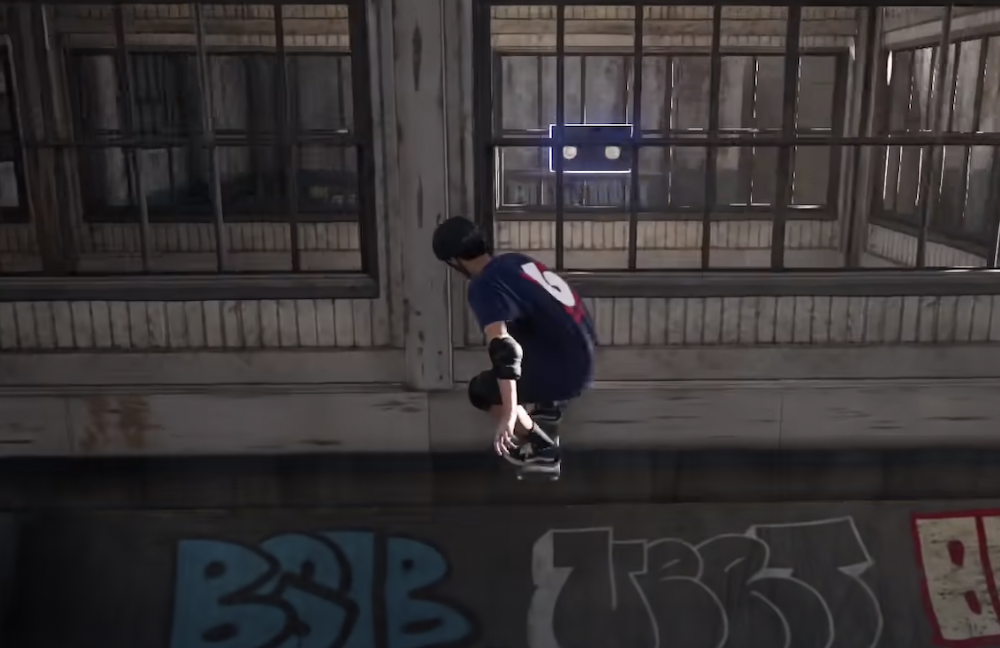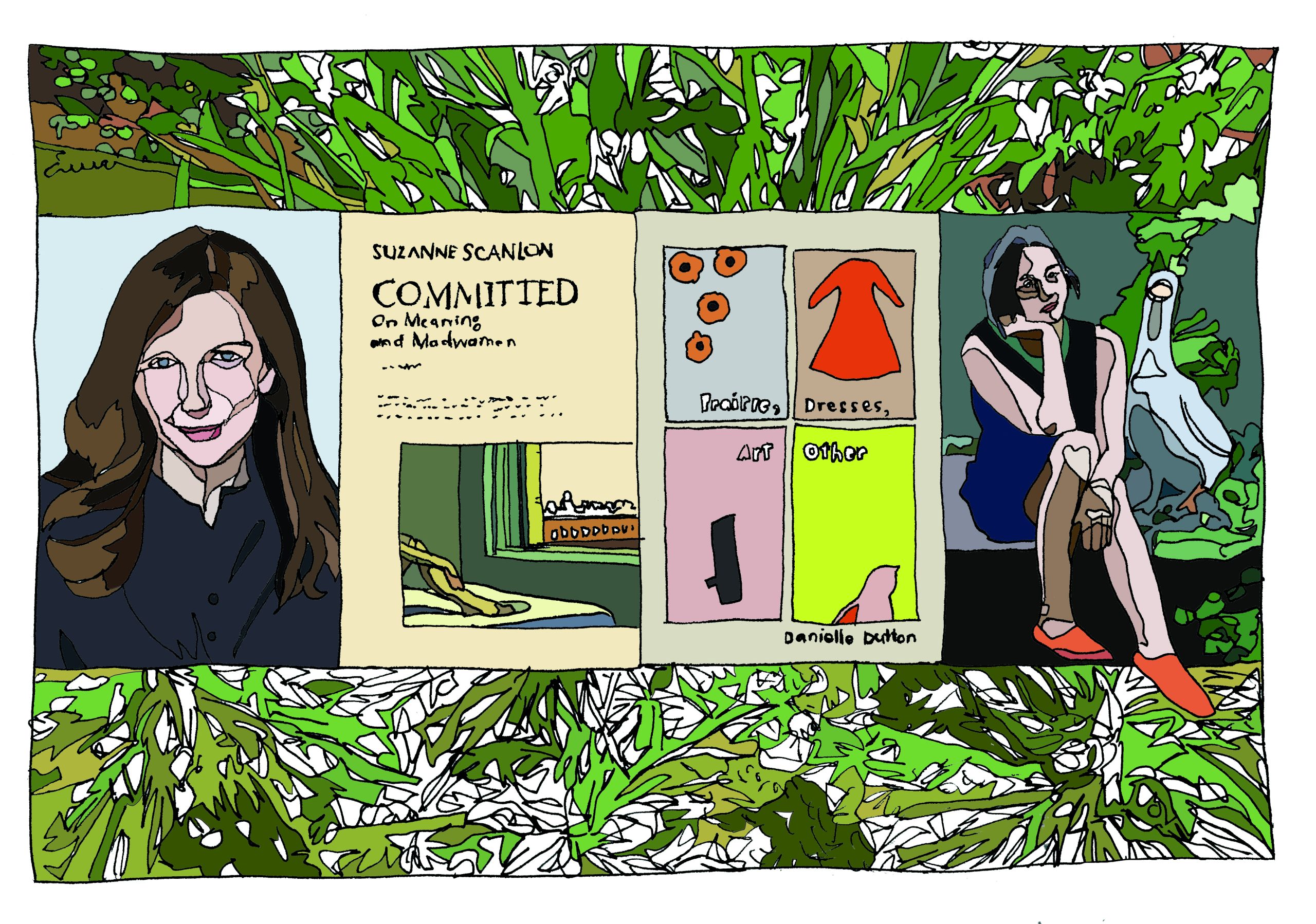Books & Culture
On the Accidental Art of Tony Hawk’s Pro Skater
The video game subcommunity gave Jeremy Klemin working language to better understand literary craft

When I turned eighteen, I started going to a Lincoln Heights music venue called Low End Theory a couple times a month. Hosted every Wednesday, the spot was a hotbed for experimental hip-hop producers. I’d pick up my friend David in Anaheim’s fringes, and then we’d make the hour-long drive to the venue. We’d met online six or seven years earlier playing Tony Hawk’s American Wasteland, which at the time was the most recent installment of the Tony Hawk’s Pro Skater (THPS) series. The “Wasteland,” of course, was Greater Los Angeles. The game’s open-world design was innovative for its time—players weaved through the palm trees of Beverly Hills’ Rodeo Drive, carved the banks of the Los Angeles River somewhere near Low End Theory, or popped over to Orange County for a session at the Vans skatepark, where David and I had first met up in middle school.
The tiny subcommunity of Tony Hawk’s Pro Skater series taught me how to read like a writer, to appreciate decisions made and not made
David and I didn’t see each other much during high school, mostly because neither of us drove. But we talked almost daily, and when we turned eighteen, we were suddenly making the fortnightly pilgrimage together a few times a month. David was simultaneously a stranger and a brother; for years he was the only real friend I had who also loved reading. He introduced me to the dense brilliance of Gene Wolfe, while I can proudly claim introducing him to Borges. Whenever there was a lull in conversation during those first few car rides, we turned back to books. In describing an author, we’d look for metaphor in our shared native language, that of THPS’s online community. At first, this was a kind of joke. I’d say something like, “You see that new video by team tRM? Very Jonathan Franzen. Masterfully crafted, ambitious in its scope, but who gives a shit?” And David: “That video by Nonsense was really ahead of its time, holy shit. This is our Moby Dick. People are going to be watching this fifteen years from now, I swear.” (He was right.) For a long time, I thought that this was simply how David and I had learned to bond. But as I became older and grew more serious about writing, I realized my love for reading and THPS came from the same place, exercised the same muscle. The tiny subcommunity of THPS that David and I both belonged to taught me how to read like a writer, to appreciate decisions made and not made. It gave me a working language to talk about craft in. Above all, it introduced me to the joys and frustrations of practicing art. Without that community, I doubt I would have become a writer.
THPS could not have become an art without its community, and even though THPS1 and 2 were wildly popular, it wasn’t until the release of the game’s third installment, which had an online feature, that a serious community started to form. There were various mini-games you could choose from while playing online, and “Trick Attack,” which awards you points for doing tricks, remains the most popular. To rack up a high score, you need to string together a “combo” of tricks. Here’s what this looks like: You grind an actionable part of the landscape, manual (the skateboard equivalent of a wheelie) to get to a quarterpipe, and so on. If you’re able to maintain a combo after the time runs out on the session, you’re allowed to keep skating until your combo ends. On THPS3, you played a Trick Attack, the game ended, and then the host of the virtual room started another. It got old fast, and the underwhelming size of the online community reflected this.
Tournaments with judges, each with her own, wholly subjective idea about what prov should constitute, were held regularly.
Not long after THPS went online, hardcore players grew tired of the endless Trick Attacks. Rather than following repetitive “robot” lines guaranteeing maximum points and easy balance—and thus “winning” a game devoid of incentives—these same players started prioritizing artful trick usage and general elegance. Early language surrounding this phenomenon varied, but a common term—improvisation, “prov” for short—concretized. Players started making videos and posting them to new, community-run forums whose domain names were paid for by one of the handful of players older than eighteen: Bens0nn, Nacho, Cio. The zeitgeist was changing, expedited by the release of Tony Hawk’s Underground (THUG), the first game in the series that allowed you to observe players still holding combos after the time in the session expired. The “best” players were no longer on the Trick Attack leaderboards. They were those who, for one reason or another, were uniquely watchable after your own combo had ended.
Tournaments with judges, each with her own, wholly subjective idea about what prov should constitute, were held regularly. Some of these tournaments are permanently embedded in prov’s collective memory. There are 15-year-long running jokes about so-and-so being robbed, about clandestine arrangements between players and judges. The community has since moved from a constellation of forums to Discord, and in that migration, countless videos fell through the cracks. KC and Diz’s first transfer video, once canon, is thought to be unrecoverable, and Brazbox’s hard drive, the greatest collection of videos by any one player, bit the dust. Despite these losses, the community has a strong sense of history.
Slowly, these Trick Attack sessions stopped being win-lose mini-games and instead became the most convenient way for prov players to show off. In a prov lobby, nobody cared in the slightest about winning, and the repeated matches literally became pointless. This is why casual players were so flummoxed at watching a combo stretch on for minutes at a time when that player had already won, and why it was so difficult for me to explain prov to my friends. It was like trying to explain the nuances of a sport without being able to agree on its basic rules. But to call prov a type of sport, or an eSport, even, would be misguided. Prov is purely expressive, there’s no winning or losing. A real-world parallel might be capoeira, that mesmerizing Afro-Brazilian martial art that is, at its core, an art. As soon as players stopped trying to win Trick Attack games, THPS prov became something more than a game.
There was a Platonic ideal, and the best provers perfectly adhered to canonical trick usage.
To say that multiplayer THPS became pointless is not a condemnation. Real-life skateboarding is similarly pointless, answering only to internal and perpetually morphing conventions. Curt Lindgren (or Rodney Mullen, depending on whom you ask) came along and kickflipped, something hitherto absent from skateboarding’s collective imagination. Like skateboarding, all innovation within the closed system of THPS’s laws and physics is fair game. Strapping a board to your thigh with an exercise band and skipping around erratically in public is not yet part of what falls under the umbrella of skateboarding, but it could be—skateboarding is mutable in a way that a sport like basketball is not. JM Coetzee’s words about the modern conception of the novel in his genre-bending book Elizabeth Costello make for an apt comparison here: “When it entered the languages of Europe, [the word novel] had the vaguest of meanings: it meant the form of writing that was formless, that had no rules, that made up its own rules as it went along.” Prov was similarly disinterested in defining its own parameters. While this was initially an oversight—the result of a bunch of teens not knowing what they had stumbled upon—this looseness and openness toward aesthetic change has become one of prov’s defining characteristics.
In chaotic and horizontal fashion, THPS prov continued to evolve. Early prov prized “style”—the use of certain skateboarding tricks in harmonious, agreed-upon patterns—as more important than interesting decision-making or originality. There was a Platonic ideal, and the best provers perfectly adhered to canonical trick usage. This early philosophy of prov was a harmonious, total system, but there was little room for innovation. Players seen as having particularly novel or unconventional trick usage—see Jens, who resembles a whirling dervish with his dizzying, maximalist playstyle—were understood to merely be better at representing Perfect Trick Usage in its totality. It was mimetic rather than creative, akin to early landscape painting.
In the end, the question is about the extent to which prov must truly be improvised.
As the years have gone on, opinions on how to evaluate prov players have only become more fragmented and nuanced. Some think that “flow” is among the highest indicators of a skilled prover. In this philosophy, a player’s ability to gracefully maneuver through all of a map without losing momentum is prized. Each map is its own “complete library” to borrow Jorge Luis Borges’s idea, replete with endless permutations and potential decisions.
Flow is prioritized in the videos of early prodigies like Ksk and Gonzo, whose playstyles would seem risk-averse if judged by today’s standards. On the opposite end of the ideological spectrum, some players value unpredictable movement above all else. Silent, whose Downtown and East LA video holds a special place in my heart, is probably the most important name here. His willingness to change direction and break a combo for spontaneity’s sake pushed the boundaries of prov and marked a major turning point. Even though he hasn’t played seriously in years, you can see his influence in contemporary videos. At any given point in prov’s history, public opinion has favored either flow or unpredictability to varying degrees. A flow-oriented player is likely more skilled at keeping a combo after a Trick Attack session expires because, ostensibly, they’re taking fewer risks. Likewise, flow-oriented players are consistent, and they often perform well in tournaments. A recent history of winners—Konek in the famed i5 tournament, which I judged in 2020, Voyage in the tLTourney—bears this out. In my opinion, the best players synthesize both polarities of these philosophies, carrying combos into deep waters while making daring, innovative choices.
Within this question of flow versus unpredictability, there are more unresolved issues. Do you value large, difficult stunts pulled off during runs, or are you instead attuned to the small, interesting decisions made at every turn? Particularly bombastic players might incorporate stunts called “transfers” into their runs. It’s a slippery term, but I’d define the transfer as a unique move that gets a player from one part of the map to another in a creative way—exploiting a ramp with glitchy physics to grind an impossibly high scaffolding, for example. The community’s tolerance of incorporating transfers into prov runs depends on what’s trending. It’s a question of subtle economy vs. absolute vitality: do you prefer, for example, the restrained quietude of Marilynne Robinson’s writing, or the maximalist intensity of Thomas Bernhard’s?
Like a photograph, a certain player’s prov either punctures me or it doesn’t.
Debates about the place of transfers in prov are contentious, but in the end, the question is about the extent to which prov must truly be improvised. Some think that doing a logistically difficult maneuver during a run is the pinnacle of improvisational skill, while others think it is lazy lip-service to the real art of improvisation and, if it seems like a player has planned a particularly interesting move in advance, those observing might voice their displeasure with the player’s brazen disregard for true improvisation. Some players are now polarizing because their playstyles are so transfer-heavy—so glitzy and showy—that many think it can no longer be called improvisation. There’s a delicate balancing act here between doing interesting things during runs, but not having them be so interesting that they’re obviously premeditated. I feel this same tension when watching a dance like samba or forró; I’m captivated by how dancers are simultaneously capable of technical mastery and utter nonchalance in real-time.
Discussions about the true nature of improvisation aren’t unique to THPS. When I started regularly playing the game, debates about freestyle rapping in hip-hop were at their height, and freestyle purists would flock to the internet, indignant that, in a freestyle cipher, their favorite rapper had recycled lines from an earlier session. The more moderate camp argued that part of a freestyle rapper’s genius is her ability to seamlessly stitch together disparate elements or verses, a skill closer to collage than divine inspiration. Maybe jazz is the best comparison: successful improvisation requires a fantastically broad skill base and understanding of the art to begin with. Some take issue with how far away from true improvisation certain players are, but nobody doubts their raw ability. I would not be surprised if this playstyle returns to fashion one day.
It is, I’ll admit, unsurprising that formal THPS criticism among provers has never quite taken off in the way I hoped for. When trying to articulate to other critics in the community why I find a particular player special, I’m often forced to resort to the same vague language used to describe a writer’s unique “voice.” “They have a unique ______; they play in a way that is distinct and wholly their own.” Among the most unique players, their “voice” (or whatever word you’d like to use) is like a watermark permanently stamped on their skateboarder’s forehead. Even if an innovative player assumes a different alias and created skateboarder, it’s entirely possible she might be recognized by other provers. Every so often a prov phenom comes from nowhere, and just like fans and journalists alike pored through the syntax of notable Italian authors to unearth Elena Ferrante’s identity, the prov community might perform a close reading of this new prodigy’s playstyle to confirm that they aren’t, in fact, an already-established player in disguise. We have, too, our own outsider artists, provers who, partially disconnected from the community’s influence, make increasingly bizarre and innovative videos that have little in common with the contemporary canon. Many of these outsider artists come from countries without a strong tradition of English-language education. This fact has hindered the players in some ways, but it has also allowed them to flourish without the anxiety of influence, to borrow a phrase from the literary critic Harold Bloom.
To a novice prover, videos of notable early players—the aforementioned Ksk and Gonzo—might seem banal in the same way that a casual movie-watcher might find Citizen Kane boring. If their playstyle seems unremarkable now, this is because players who came after them have already digested and internalized the way they changed the game, and that foundational link has been lost. There was a before them and an after; they have permanently changed the trajectory of our little art. “I like the way he plays” is neither insightful nor meaningful, so I’ll borrow from Roland Barthes and his words on photography instead. Like a photograph, a certain player’s prov either punctures me or it doesn’t. I am sometimes unable to describe certain aspects of prov in the same way that, as someone chiefly interested in prose, I feel incapable of saying anything intelligent about a poem or painting. “I like the way it makes me feel” is my lone recourse.
I’m also unable to explain why I was considered an innovative THAW prover, but nothing more than average on earlier installments like THUG and THUG2. In the maps of these earlier games—Moscow, Berlin, Manhattan, Barcelona—I feel unsure of myself, far from THAW, far from Los Angeles’s great sprawl. The games are basically the same, save minor differences in physics, map design, and balance meters. But maybe the reasons were sentimental: I am from Southern California, and so the opportunity to prov right under the Hollywood sign or grind the rails on the Santa Monica Pier or Downtown’s famed Alameda ledge remains a deeply personal affair. Or maybe it’s a question of translation, maybe I find myself mediocre at earlier games in the series for the same reasons I find the Brazilian author Clarice Lispector beautiful in Portuguese but saccharine in English despite diligent, faithful translations of her work. But this isn’t a perfect metaphor, as THUG was actually released before THAW. Perhaps, as Borges says, the original is unfaithful to the translation.
Years removed from having seriously played any other video game, I still feel the same sense of exhilaration starting a Trick Attack prov run as when I start a creative essay. In both instances, I have no idea where I’ll end up, no idea what art I will have arrived at. Neither will live up to the Edenic, idealized expectation I have before starting, but I will have at least done something new. I thought seriously about the craft elements of improv before I did so with literature, and without THPS, I doubt I would have ever started writing. Prov gave me a critical vocabulary for thinking about the importance of imitation; it helped me identify one artist’s influence on another. It helped me appreciate the nebulous qualities of a work—voice, mood, tone—that, while anathema to writing 100 students everywhere, make close reading worth the effort. Whether video games are art is an old discussion that I’m not particularly interested in; the question is so broad that it’s meaningless. Prov is an art, and there is meaning in total dedication to an art. Even a minor one.








